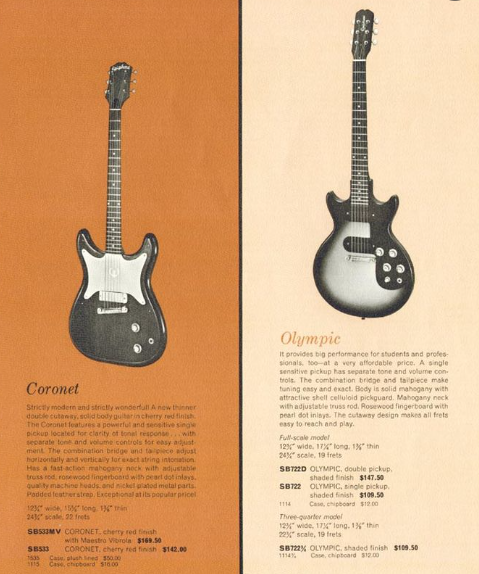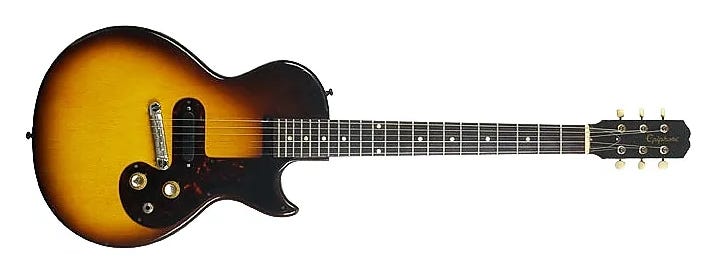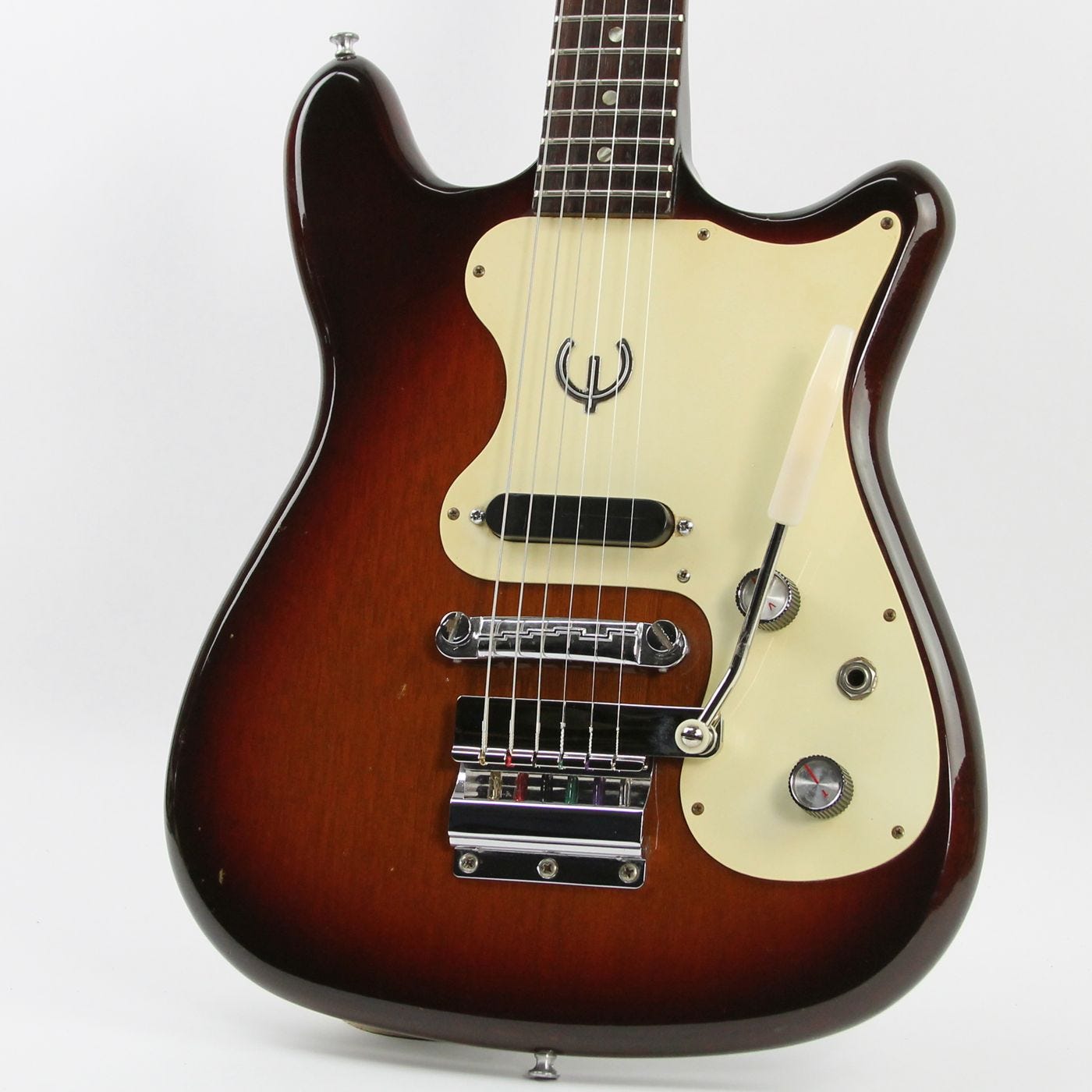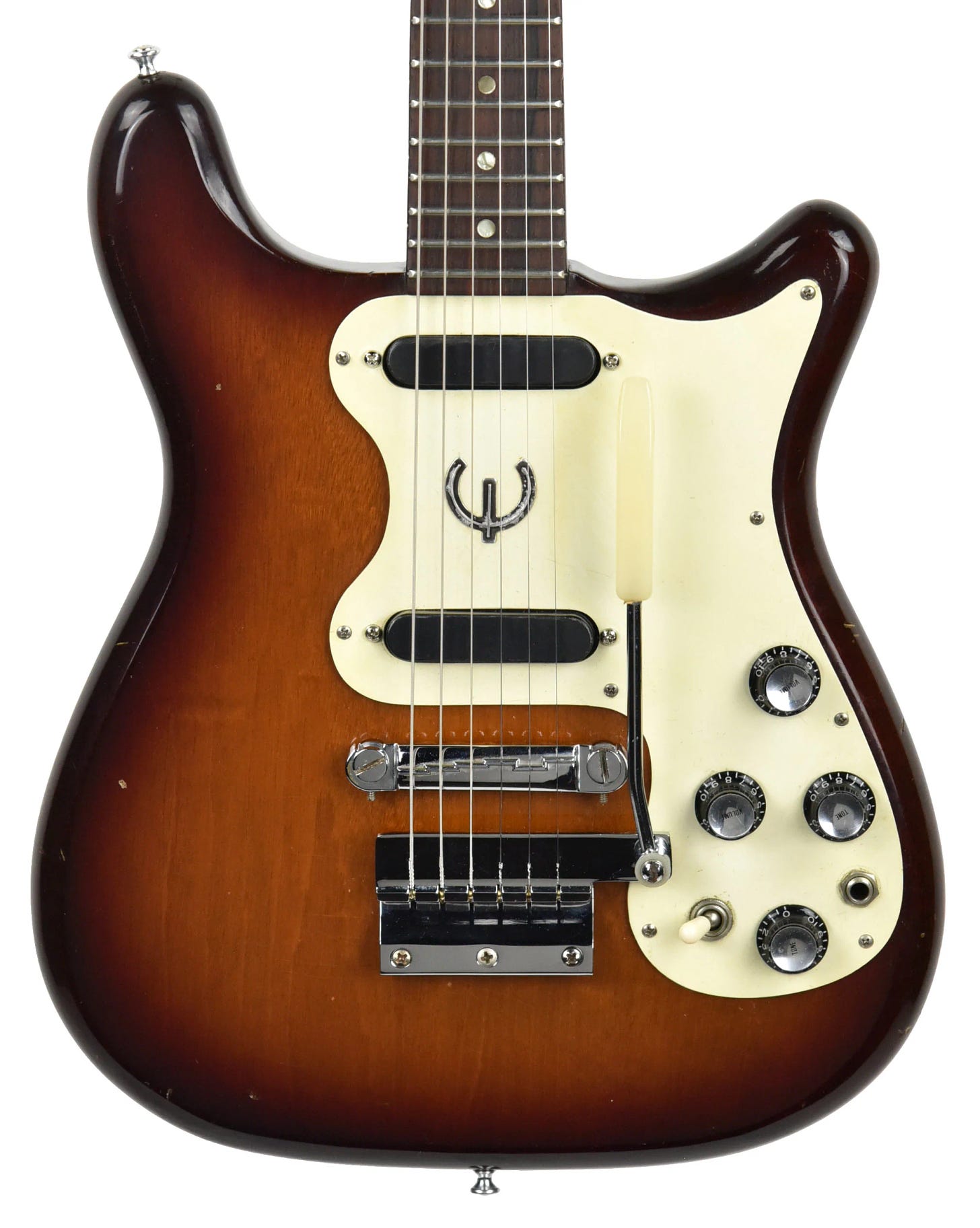Your “Lick Of The Week - Bo Diddley Beat, with Scott Olson
Special guest Scott demonstrates the classic Bo Diddley Beat in E.
First phrase: E - 3 beats - G - 1 beat - A - 1 beat, open - A - D - G strings 1 beat Barre chords are D 5th fret - C 3rd fret
Thank you so much Scott!
Epiphone Olympic Games
The Epiphone Olympic was introduced in 1960 and experienced several body changes and name variations.
At its core the original iteration is a Gibson Melody Maker with a different headstock. The Olympic and Melody Maker were both built in Kalamazoo using the same materials and had the same price tag. At that time both were also single cutaway models like that of a Les Paul.
The Olympic changed to a (near) symmetrical double cutaway style in 1962.
That lasted one year before the bass horn was slightly elongated in 1964 making the guitar more of a definitive asymmetrical body style.
Here’s where it gets confusing: In 1964 Epiphone kept the Olympic naming convention, but introduced two very different looking models.
Sort of.
The new “Olympic Single” and “Olympic Double” models took on the body shape consistent with the Coronet, Wilshire, and Crestwood.
So it wasn’t really a new body, but it was a more affordable version of the three preexisting models. The Single or Double nomenclature referred to one or two pickups.
The third and final body shape iteration of the Epiphone Olympic then became the Olympic Special (3rd picture above). It featured a solid slab mahogany body and mahogany neck weighing-in just under 6lbs. The single coil pickup was a Melody Maker PU380 and remained constant from 1960-1970.
The Olympic Special hung on until 1970 when production moved to Japan.
Upper fret access increased with each “original” Olympic body change. On the single cut model the neck joined the body at the 12th fret, then the 16th fret with the asymmetrical cutaway, and finally at the 18th fret.






